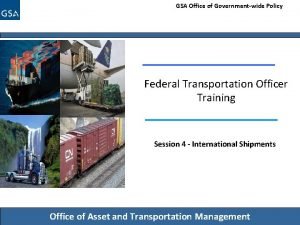Employment service providers understanding and practice regarding clients

- Slides: 1

Employment service providers understanding and practice regarding clients' challenging behaviors Christine Barthold, Ph. D. , BCBA, LBA Brian Freedman, Ph. D. George Mason University of Delaware Background • The employment rate for people with disabilities continues to be around 20% (Dept of Labor, 2014) • Challenging behaviors can make sustained employment more difficult and result in tracking people with DD to full-time day treatment services and/or sheltered workshops • Problem behaviors can stem from multiple factors: e. g. , communication challenges, frustration with job tasks, coaches or co-workers. • Employment First has led to a greater push to presume that all individuals can find employment and can remain employed. • We will need well-informed staff who can work with people to understand the cause of challenging behaviors and what is being communicated, help identify compensatory strategies, and/or make changes to the environmental context. • Little information available about provider knowledge and experience working with individuals with challenging behaviors, how they assess these behaviors, and the steps taken to support the person and the situation. Method Participants • Web-based survey of Delaware’s employment support service providers. • A list of agency contacts was provided by Vocational Rehabilitation. A link to the web-based survey was e-mailed to all contact people by a third party. This person then disseminated within their organization. • 51 staff (managers and front-line staff) from Delaware employment service providers. Difficult to estimate the overall percentage of the population that responded. Survey • Survey respondents identified different challenging behaviors they encounter in a client's workplace and their methods for understanding and responding to the behavior. Respondents also shared their beliefs about people with challenging behaviors being able to successfully maintain employment. Analyses Descriptive statistics as well as categorization and content analysis of different approaches to methods used by employment service providers for understanding and responding to behavioral challenges in workplace settings. Results Overall • In both groups, about half of providers had degrees in fields other than teaching, counseling, or other human services. • Supervisors’ results in identifying their capacity to support is more variable than direct care staff • In general supervisors seem to have more experience with challenging behaviors • Both direct care and supervisors are most likely to counsel individuals with problem behavior Comparisons of Groups What types of challenging behavior are most common in supported employment? Supervisor Direct Care Staff Noncompliance (84%) Social Skills (84%) Hygiene (42%) Hygiene (72%) Disruptive Behavior (42%) What are typical considerations you make when deciding whether someone is appropriate for community employment? Supervisor Direct Care Staff Intensity of Support (65%) Intensity of Behavior (47%) Recent History of Problem Behavior (47%) Intensity of Support (42%) What types of supports are you most likely to use when addressing challenging behavior? Supervisor Direct Care Staff Counseling (84%) Praise (84%) Communication Training (71%) Prompts (65%) Removing the Individual (65%) Counseling (73%) Praise (68%) Prompts (68%) Funding for this research was provided by the Delaware Division of Vocational Rehabilitation Contact Information Brian Freedman brianf@udel. edu Christine Barthold choffner@gmu. edu Conclusions Diversity in training and educational backgrounds may result in inconsistent methods for assessment and intervention. Staff and supervisors indicate a general understanding and use of more positive-based interventions Respondents identified problem behaviors (noncompliance and social skills) that are typically identified prior to adulthood and addressed in school. Intensity of challenging behavior and intensity of supports are important considerations for providers when deciding appropriateness for community employment Need for better understanding of how to support intense challenging behaviors more efficiently and effectively Need for improved support plans prior to transition Counseling is highly used: Need for a stronger operational definition Is counseling being provided by non-counselors? Need to help staff understand situations where this may be more/less effective Culture of removal and exclusion Results may be skewed: Social response bias Sample selection – clients with more severe challenging behaviors may be routed away from employment options Implications Increased training would promote more consistent use of evidencebased practice for understanding and supporting people with challenging behaviors. Consideration for greater focus on pre-transition support for challenging behaviors as they relate to employment Another reason for pre-transition work experience Consider an FBA model that includes Person. Centered philosophy to guide understanding and motivation for change References Roth, M. E. , Gillis, J. M. , & Di. Gennaro Reed, F. D. (2014). A Meta-Analysis of Behavioral Interventions for Adolescents and Adults with Autism Spectrum Disorders. Journal of Behavioral Education, 23(2), 258– 286. doi: 10. 1007/s 10864 -013 -9189 -x Taylor, J. L. , & Mailick, M. R. (2014). A longitudinal examination of 10 -year change in vocational and educational activities for adults with autism spectrum disorders. Developmental Psychology, 50(3), 699– 708. doi: 10. 1037/a 0034297 U. S. Department of Labor (2014). Employment status of the civilian population by sex, age, and disability status, not seasonally adjusted. Retrieved from http: //www. bls. gov/news. release/empsit. t 06. htm.

